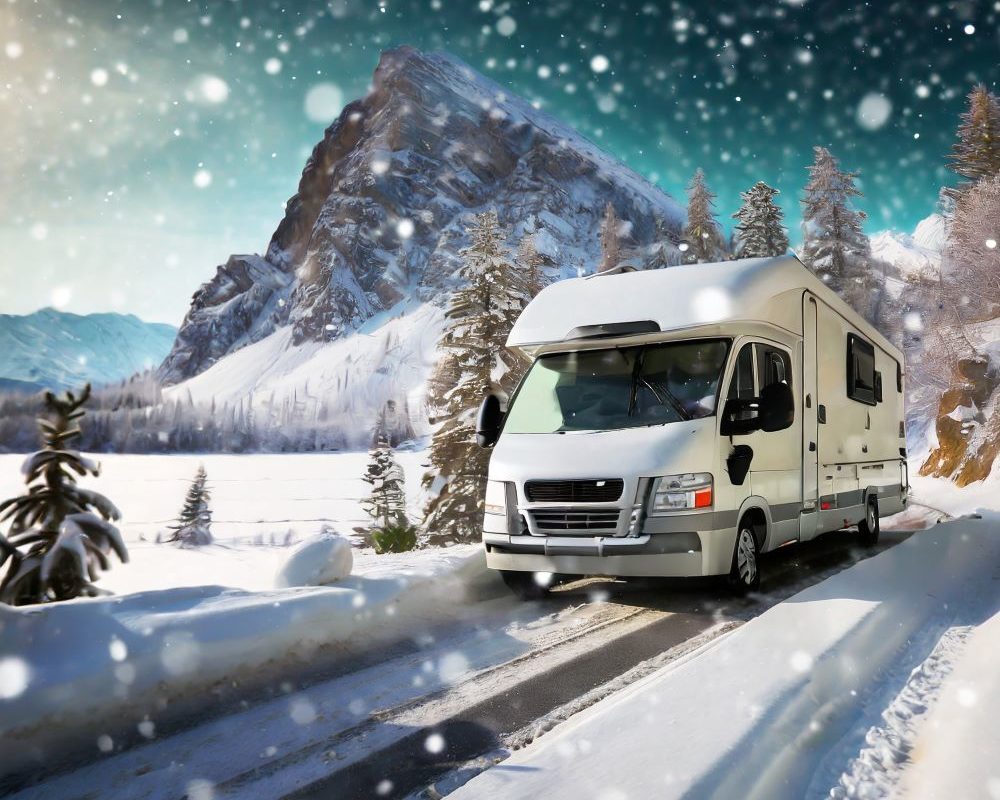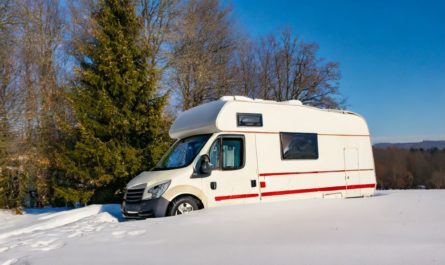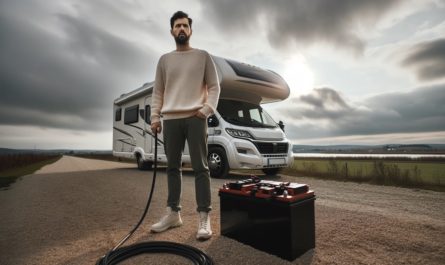Benefits of Driving a Motorhome in Snowy Conditions
Driving a motorhome in snowy conditions offers several benefits. Due to its size and weight, a motorhome provides increased traction and stability, which are essential for safe travel in winter weather. Good insulation and heating are also crucial for winter trips, ensuring that passengers stay warm and comfortable. In alpine regions, snow chains are a necessity for added traction and safety.
Using a diesel fuel additive can help prevent fuel gelling and ensure smooth performance in cold weather driving. This is especially important for winter travel, where temperatures can drop significantly. Additionally, the convenience of holiday parks makes winter camping in a motorhome more accessible, providing essential amenities and facilities for a comfortable stay.
Overall, driving a motorhome in snowy conditions offers the opportunity for a safe and enjoyable winter adventure. The increased traction and stability, good insulation and heating, the necessity of snow chains, the use of a diesel fuel additive, and the convenience of holiday parks make it a practical and comfortable option for cold weather travel.
Types of Motorhomes
Planning a road trip or camping adventure and considering a motorhome as your accommodation option? There are various types of motorhomes to choose from, each offering unique features and amenities to suit different travel needs and budgets. Whether you’re looking for a compact and maneuverable campervan, a spacious and luxurious Class A motorhome, or something in between, there’s a motorhome to fit your preferences. From towing trailers and fifth wheels to self-contained RVs, understanding the different types of motorhomes can help you make an informed decision when selecting the right one for your next adventure.
Class A Motorhomes
Class A motorhomes are the pinnacle of luxury and comfort in the RV world, offering spacious living quarters and top-of-the-line amenities. Available in various models from leading manufacturers such as Winnebago, Thor Motor Coach, and Fleetwood, Class A motorhomes cater to diverse traveler needs and preferences. Some models come with all-wheel drive options for enhanced traction and control in winter driving conditions, making them well-suited for traveling in snow and cold weather. These Class A motorhomes are equipped with advanced features to ensure a safe and comfortable journey, including heated floors, insulated walls, and dual-pane windows.
For those interested in purchasing a Class A motorhome, a variety of options are available for sale at local dealerships and RV shows. Local inventory can be found at dealerships in the area, as well as through online RV marketplaces and classified ads.
The benefits of Class A motorhomes for winter travel are numerous, with their spacious interiors, ample storage, and advanced heating systems providing a cozy and enjoyable experience. Their all-wheel drive options and specialized winter driving features make them ideal for navigating through deep snow and icy roads, ensuring peace of mind and safety for travelers. Whether it’s a weekend getaway or an extended road trip, Class A motorhomes offer the perfect blend of luxury and functionality for all-season travel.
Class B Motorhomes
Class B Motorhomes, also known as camper vans, offer AWD options for those looking for enhanced traction and stability in winter conditions. Two popular AWD models are the Thor Motor Coach Omni and Gemini. These AWD motorhomes are equipped with all-wheel drive systems that provide better control and traction on snowy or slippery roads.
These motorhomes come with features designed to make winter driving more comfortable and safe. This includes advanced heating and insulation systems to keep the interior warm, along with dual-pane windows to minimize heat loss. Many models also include heated tanks and pipes to prevent freezing, as well as winterized plumbing options for extended cold weather use.
The AWD capabilities of Class B Motorhomes make them ideal for navigating through snowy and icy terrain, providing better handling and stability in adverse winter conditions. The smaller size of these motorhomes also makes maneuvering through snow-covered roads and tight parking spaces easier.
For those looking to travel and explore during the winter months, Class B Motorhomes with AWD are an excellent choice, offering the features and capabilities needed to enjoy a comfortable and safe winter adventure.
Class C Motorhomes
Class C Motorhomes are a popular choice for those looking to travel comfortably and safely during the winter months. These motorhomes are built on a specially designed chassis, offering better stability and control on slippery roads. They are equipped with features such as insulated walls, dual-pane windows, and heated tanks to withstand cold temperatures. Class C Motorhomes also come with a variety of heating options, including propane and electric, to keep you warm and cozy inside.
For winter driving, Class C Motorhomes offer the added benefit of All Wheel Drive (AWD) options. AWD provides better traction and control, making it easier to navigate through snow and icy conditions. This feature is especially valuable for those who plan to travel to areas with challenging winter weather. With AWD, Class C Motorhomes offer a safer and more reliable driving experience in winter conditions.
In comparison, All Wheel Drive (AWD) Class B+ Motorhomes and Gemini AWD are also suitable options for driving in deep snow. These motorhomes are designed with enhanced traction and stability features, making them suitable for challenging winter road conditions. Gemini AWD, in particular, offers a unique dual-wheel drive system for improved traction and control in snow and ice.
In the next section, we will explore the differences between AWD Class B+ Motorhomes and Gemini AWD in more detail.
Travel Trailers and Fifth Wheels
Travel trailers are towed by a hitch attached to the back of a vehicle, while fifth wheels are towed by a special hitch in the bed of a pickup truck. Fifth wheels are typically larger and offer more living space, while travel trailers are more affordable and versatile for different types of vehicles.
For winter RV road trips, fifth wheels offer better stability and maneuverability due to their unique hitch design, making them ideal for navigating snowy or icy roads. Travel trailers, on the other hand, may require additional caution and skill when towing in winter conditions.
When towing in winter, it’s important to consider weight distribution and tire traction for both types of RVs. Fifth wheels often have better weight distribution due to their location over the truck’s rear axle, while travel trailers may require additional attention to ensure a balanced load and proper tire inflation.
Essential winter gear items for driving and camping in either type of RV include snow chains, tire traction mats, an emergency roadside kit, extra blankets and warm clothing, and a portable generator for backup power. Precautions should also be taken to regularly check weather and road conditions, keep a full propane tank, and have a reliable source of heat inside the RV.
Preparations for Driving a Motorhome in Snowy Conditions
Driving a motorhome in snowy conditions requires careful planning and preparation to ensure a safe and smooth journey. From checking the weather forecast to choosing the right equipment, there are several important steps to take before hitting the road in wintry conditions. Whether you’re a seasoned motorhome enthusiast or a first-time driver, these preparations can help you navigate snowy roads with confidence and peace of mind.
Snow Tires and Chains
Snow tires and tire chains are both important for RVs when traveling in snowy or icy conditions. Snow tires are specially designed with deeper treads and a softer rubber compound to provide better traction in snow and ice. They offer better grip and handling, reducing the risk of skidding or getting stuck. Snow tires are ideal for constant snow-covered roads and cold temperatures.
On the other hand, tire chains are metal chains that are wrapped around the tire to provide additional traction in icy conditions. They are effective in extreme winter conditions and on steep or slippery roads. Tire chains are easy to install and remove, making them a practical option for short-term use when encountering unexpected snow or ice.
It’s important to practice installing tire chains for an RV before hitting the road to ensure you can do it quickly and safely when needed. There are different types of snow tires available for RVs, including studded, studless, and performance snow tires, each with their own specific benefits and features to suit different driving needs in winter conditions.
Specialized Winter Gear and Supplies
When RVing in the winter, it’s essential to have specialized gear and supplies to stay warm and safe. Extra insulation is crucial to maintain a comfortable temperature inside the RV. Emergency survival gear such as a first aid kit, emergency blankets, and a portable stove for cooking can be life-saving in harsh winter conditions. A portable electric heater can provide additional warmth when the RV’s heating system may not be enough. Non-perishable food is important to have on hand in case you get stuck in a snowstorm and are unable to leave your RV. Other items to consider are a shovel for snow removal, tire chains for traction on icy roads, and a backup power source such as a generator or solar panels. It’s also important to have a method for staying informed about weather conditions and road closures, such as a weather radio or a reliable internet connection. By being prepared with these specialized winter gear and supplies, you can enjoy RVing in the winter while staying warm and safe.
Vehicle Maintenance Checklist
Before traveling in snowy and icy conditions, it’s important to ensure that your vehicle is properly maintained to ensure safety. This includes checking to see if your vehicle is equipped with snow tires, which are specifically designed to provide improved traction in icy road conditions. Snow tires have a deeper tread pattern and are made from a softer rubber compound, allowing them to better grip the road in cold temperatures. If your vehicle is not equipped with snow tires, consider upgrading for improved safety.
In some cases, tire chains may be necessary for added traction on snowy or icy roads. However, it’s important to check with the rental company before using tire chains, as some companies may have restrictions or prohibitions on their use. Additionally, make sure to regularly check your tire pressure, wiper blades, brakes, and fluid levels to ensure your vehicle is in optimal condition for traveling in winter weather. By following these vehicle maintenance tasks, you can help ensure safe and secure travel in snowy and icy conditions.
Driving Tips for Operating a Motorhome in Snowy Conditions
Operating a motorhome in snowy conditions presents a unique set of challenges that require careful attention and preparation. From navigating slippery roads to managing visibility, it’s important to be well-equipped and knowledgeable about driving in these conditions. By following these driving tips, you can ensure a safe and enjoyable journey in your motorhome during wintery weather.
Slow Down and Plan Ahead
When driving an RV in winter conditions, slow driving and planning ahead are crucial for safety. The importance of slowing down cannot be emphasized enough, as navigating snowy and icy roads requires extra caution. RVs are heavier and less maneuverable than regular vehicles, making it even more important to drive at a safe and controlled speed. Planning ahead includes checking the weather forecast, road conditions, and having an emergency kit on board.
Driving too fast in snowy and icy conditions can lead to loss of control and accidents. It’s essential to use low gears and engine braking when descending slopes to maintain traction and prevent skidding. This technique helps to reduce the risk of sliding and provides better control over the RV.
Keywords: slow driving, RV safety, winter conditions, low gears, planning ahead.
In conclusion, taking the time to slow down and plan ahead when driving an RV in winter conditions can make all the difference in ensuring a safe and smooth journey. It’s better to arrive at your destination a little later and safe, rather than rushing and risking an accident. Prioritizing safety and being prepared for the unexpected are essential for navigating winter roads in an RV.
Avoid Sudden Stops or Acceleration
Avoiding sudden stops and acceleration when driving is essential for several reasons. Firstly, sudden stops can lead to loss of control, especially in adverse weather conditions or on slippery roads. This can increase the risk of accidents and collisions. Secondly, sudden acceleration can cause excessive wear and tear on the vehicle’s braking system and drivetrain, leading to costly repairs and maintenance. Lastly, abrupt changes in speed can be uncomfortable for passengers and can decrease the overall comfort and safety of the ride.
To ensure smooth braking and gradual acceleration, it is important to maintain a safe following distance from the vehicle in front, allowing ample time to react to any sudden stops. By anticipating stops and traffic flow, drivers can avoid sudden braking and instead apply the brakes smoothly and in a timely manner. Similarly, easing onto the gas pedal when accelerating allows for a more controlled and fuel-efficient driving experience.
In conclusion, practicing smooth braking and gradual acceleration not only promotes safety on the road but also reduces wear and tear on the vehicle and improves overall driving comfort. By maintaining a safe following distance, anticipating stops, and easing onto the gas pedal, drivers can ensure a more enjoyable and efficient driving experience.
Maintaining Traction on Slippery Roads
Motorhomes can be challenging to drive in snow due to their size and weight. To maintain traction on slippery roads, it’s important to drive cautiously and make use of a few key tips. Firstly, gently accelerate to prevent wheel spin and loss of traction. This can be especially important when driving up inclines or on icy patches. Secondly, when starting from a standstill, consider starting in second gear to minimize wheel spin and gain better traction.
Additionally, when driving in snow, it’s important to steer gently and avoid sudden movements that could cause the vehicle to skid. When maneuvering on a slippery surface, it may be beneficial to uncouple any caravan or trailer to improve maneuverability and reduce the risk of jackknifing. It’s also crucial to ensure that the motorhome is equipped with suitable tires for snowy or icy conditions to maximize traction.
In summary, driving a motorhome in snow requires cautious and gentle driving techniques to maintain traction on slippery roads. By following these tips and being mindful of the road conditions, drivers can navigate safely through snow and winter weather.



